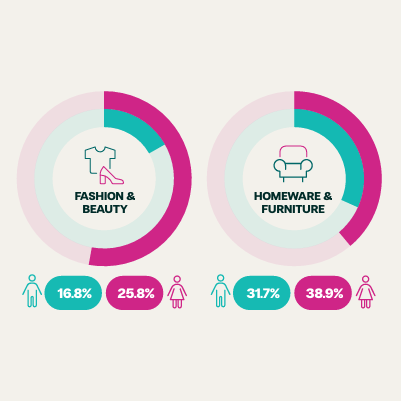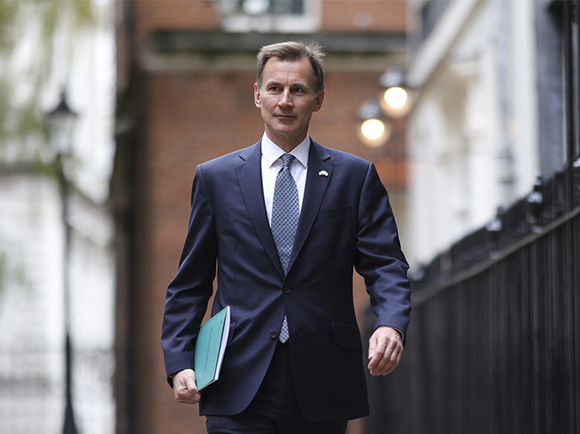Why partnering with a Tier One lender is the sensible choice in a cost of living crisis

It’s official: The United Kingdom will enter a recession before the end of the year. That’s according to the Bank of England, who recently raised interest rates to their highest level in 27 years in a bid to wrestle inflation.
Real wages have fallen by almost 4% – the largest drop in over two decades – as prices soar out of control during the cost of living crisis.
The result? The purchasing power of consumers and businesses is being whittled away as the value of money decreases. Budgets are being rethought as spending is reigned in across the board.
Buy Now, Pay Later (BNPL) and the cost of living
Reports suggest that more consumers are turning to Buy Now, Pay Later than before the cost of living crisis started. This trend will likely persist as the economy plunges into further turmoil.
Low-income consumers with nowhere to turn are said to be using BNPL to purchase low-ticket items, like food and fuel. A number of BNPL providers unfortunately enable this type of financing. Is it right that these brands will see an uptick in revenue off the back of consumer hardship?
The point being made is that this sort of business practice raises serious ethical concerns. Providers offering BNPL to consumers with their backs against the wall are surely not fulfilling their Duty of Care. Providing credit irresponsibly at any time is cause for concern. But doing so during a cost of living crisis could well result in reputational damage for any party seen to have taken part in irresponsible lending, merchants included.
Broadly speaking, the BNPL market is also feeling the effects of external economic pressures. An increase in costs, reduction in spending, and plummeting profits have left many analysts questioning the sustainability of some of the most well-known BNPL providers. These changes in the macroeconomic environment come as the first real test for their business models. As central banks raise interest rates it becomes more costly for these BNPL companies to lend to consumers. As central banks raise interest rates it becomes more costly for these BNPL companies to lend to consumers.
Significant changes are afoot for these companies, who are already struggling to navigate the developing market. Merchants who have already onboarded their solutions at the checkout will not escape the fallout.
The solution may be an alternative, but already well-established model for retail finance – one that frees the platform to remain agile while still offering the security of a financial institution, opening the door to traditional financing from legacy lenders with significant experience in dealing with turbulent markets.
Here’s why partnering with a Tier One lender-enabled BNPL solution may be the most sensible way to offer BNPL through the cost of living crisis.
First – what do we mean by ‘Tier One lender’?
Lenders can be separated into Tiers that determine the expense of the credit they provide and the rigidity of their underwriting. The lower the Tier, the cheaper the credit and the more stringent the underwriting. A Tier Five lender would therefore have more expensive credit and looser underwriting than a Tier One lender, which is considered the gold standard. Think Private Investor (Tier Five) versus a High Street bank (Tier One).
Many of the big names in BNPL are technically specialist lenders and sit around Tier Three. Their credit worthiness checks are less stringent and the cost of doing business is higher as a result.
The risks of choosing the wrong lender
It’s important to detail the risks of choosing the wrong BNPL provider before we explain the benefits of partnering with a BNPL provider backed by Tier One lenders. Understanding where and why costs are rising will expose the fragility of some business models, whilst reinforcing the strength of others. Let’s start with the Bank of England’s recent announcement.
1. Rising Interest Rates
BNPL providers generally borrow money from central banks to finance their loans. This means a BNPL provider in the UK will borrow money from the Bank of England to pay merchants for a consumer’s purchase up-front. The provider receives a small percentage of the transaction – usually between 2% and 6% – then waits for repayment from the consumer in the form of instalments. This can take anywhere from weeks, to months, to years. The provider therefore uses money borrowed from the Bank of England to bridge the gap between lending and being repaid.
But the cost of bridging this gap increases as interest rates rise. Rising interest rates make the cost of corporate borrowing more expensive, meaning the cost of doing business has just shot up in line with the Bank of England’s announcement.
This may be compounded by a reduction in transaction volume. The cost of mortgages also increases as interest rates increase, so consumers now have less disposable income. The rise, in theory, also makes saving more lucrative, creating an incentive not to spend.
The result? A reduction in consumer spending as households reign in their purchases and rethink their budgets.
E-commerce transactions are already decreasing, but the figures will likely decrease further with higher interest rates and a recession. Consumers are also said to be increasing their reliance on cash as the economic situation worsens. Less online transaction volume means less revenue for BNPL providers.
2. Increasing number of defaults
A reduction in purchasing power, consumer spending, and a likely wave of job losses brought about by the impending recession will almost certainly lead to an increase in defaulted payments.
BNPL providers have typically been able to approve loans for consumers that a traditional financial institution simply would not have. That’s great for the providers and the consumer when these loans are fulfilled. Credit worthiness checks are not perfect by any means, and even credit worthy consumers could now find themselves denied as lenders’ appetites decrease.
It is when these loans are not fulfilled and payments are missed that things start to get a bit worrying. The latest figures are beginning to suggest that the number of missed payments may be starting to rise. Paying for a weekly food bill, after all, takes precedence over a small loan repayment.
Lenders’ mechanisms for debt recovery are expensive, inefficient and time consuming. This could be bad news for the sector.
3. Cost of compliance is increasing
BNPL providers have historically spent less on their risk management than banks and other lenders. Why? Because they didn’t have to.
A simple soft credit check to determine whether a consumer is worthy of a £50 loan and the provider will either accept or deny the application. In most cases the application is accepted, at which point the consumer begins to build up their own credit history with the provider.
But with new regulation comes new responsibilities, and becoming compliant is going to cost these providers.
The cost of preparing for this change will be significant. Not just in legal fees, but in reorganising the structure of the business, building and developing new risk functions, and training teams. The cost of non-compliance, on the other hand, will be far greater. This is not something that can be ignored.
4. Hard credit checks
A simple keyword search for some of the best known consumer-facing BNPL providers reveals an interesting truth. A percentage of website traffic for the majority of these providers comes from variations of the search “buy now pay later no credit check”, suggesting the appeal of BNPL to some consumers may be how easy it is to get credit they arguably should not have access to.
This tells a rather murky story, one that the media have told on more than one occasion. That is, vulnerable consumers are using BNPL to take out credit they cannot afford.
Incoming regulation will provide these consumers with an extra level of protection. The introduction of hard credit checks – part of the proposed regulatory changes in the UK – will reduce the number of vulnerable consumers that are approved for loans. Though the regulators themselves have stated that any added friction must be proportionate. A £30 need not require the same credit-worthiness checks as a mortgage.
But what does this mean for providers, particularly those who rely on low-ticket transactions from low-income consumers? In all likelihood, it will mean a reduction in transaction volume for the provider.
Does this rise in cost matter?
In short, yes.
BNPL business models are being stress-tested by the macroeconomic environment. One prominent BNPL provider posted losses of over $700 million in 2021. This, and other providers like it, will have tightened their lending criteria in response.
An increase in costs and decrease in volume will significantly affect the bottom line of many BNPL firms. The industry average profit margin was said to be as low as -2.6% in early 2021 – long before the new economic pressures.
Providers are going to need to recover these added losses. BNPL providers generally charge 0% interest to consumers, which is unlikely to change despite the rising costs. So where will they recoup the lost earnings?
The most feasible means to do so would be to increase their merchants’ fees. Providers could turn predatory.
The solution? Partner with a Tier One Lender
Now that we’ve established the pitfalls of popular BNPL business models, it is time to consider the benefits of partnering with a Tier One lender.
Tier One lenders also borrow from the Bank of England, but they treat BNPL as an essential customer acquisition platform rather than a revenue driver. A BNPL loan today could be a mortgage in the future. The costs for businesses are therefore unlikely to increase alongside interest rates when those merchants are partnered with a Tier One lender.
Tier One lenders are also FCA approved and regulated by design. These financial institutions provide a suite of credit products: their businesses are diversified to deal with macroeconomic shocks and their risk management is second to none. Risks of default are minimal as stringent credit worthiness checks are always carried out. This is in contrast to BNPL providers, who have loose risk management practices.
This also means that incoming regulation will have little impact on the operating costs of these financial institutions. Tier One lenders do not need to scramble to become compliant because they are already compliant.
Divido provides checkout finance – a higher ticket, responsible lending alternative to BNPL – partnering exclusively with Tier One lenders. Our whitelabel retail finance platform has multi-lender capability, providing you with the flexibility to partner with a trusted lender that suits your business.
Not only will your business side-step the extra costs of an economic downturn, but you can be sure to avoid any tailwind from any PR fallout. Divido is the ultimate choice in today’s climate.
Find out how your business could benefit from a retail finance platform powered by Tier One lenders. Contact the Divido sales team today.
Want more information on the difference between Buy Now, Pay Later and Short-term Interest-free Credit? Click here to find out why these two models matter.
Divido is the platform partner enabling lenders and merchants to launch their own-brand checkout finance, fast. Consumer journeys are seamless, and can be optimised to convert more customers at every point of sale, online and in-store.
Keen to know more?








